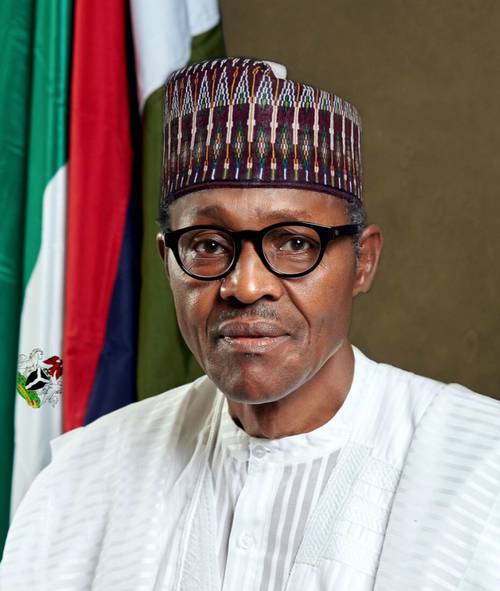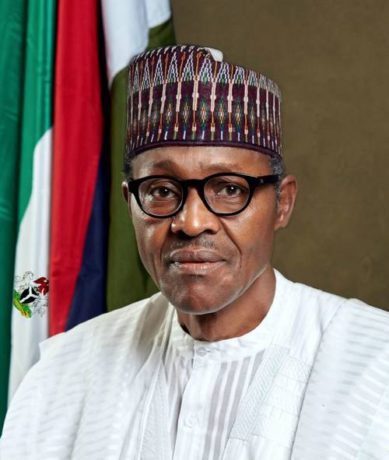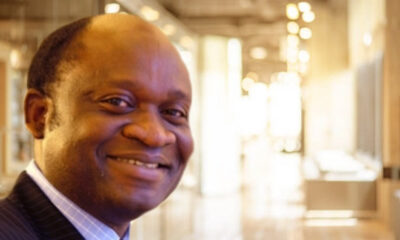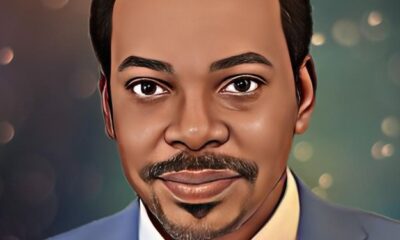Democracy & Governance
Creating Jobs Through Industrial and Product Design -By Jerry Obi

The introduction of industrial/product design into the job creation programme of the President Muhammadu Buhari government is a prelude to industrial revolution in the country because new and innovative products and services are at the heart of industrial growth and sustainability. First and foremost, I commend the positive efforts of our democratically elected government of President Buhari in trying to ensure that the economic and social living standards of our people is improved, at least to a reasonable degree. I also applaud the federal government for making it crystal clear that suggestions and solutions are
welcome from Nigerian professionals in creating better living conditions for the Nigeria masses. It is on the basis of these good intentions that I would propose a massive training exercise in the field of industrial/product design for Nigerians who possess creative abilities, to move in line with the job creation efforts of government.
…industrial/product designers create exportable products and services, which will, in turn, encourage the establishment of small, medium and large-scale industries. It will ensure the rehabilitation of old and decayed industries, and it will encourage the indigenous manufacture of spare parts needed by public utility establishments such as our electrical distribution companies and the various water corporations.
Now what is industrial design? We know that throughout history human beings have been distinguishable from other animals by their ability to make and use of tools and artifacts. It is this unique skill that has evolved and been refined over the course of time to become the essence of industrial design. Industrial designers using natural and synthetic materials (which are the raw materials we have in abundance in our nation) and sophisticated technology, design objects that serve useful purposes and usually can be created in large numbers by machines.
The term ‘industrial designer’ comes from designing products that are manufactured by industries. For that reason industrial designers are sometimes called product designers. Everywhere, at homes, school, work, or play, objects that are the result
of the efforts of industrial designers surround people. Everything from furniture to aircrafts, from pre-school toys to word processors are carefully planned and designed by someone before they can be made into products. Industrial designers have their greatest influence on products such as hand tools, automobiles, cameras, furniture, large and small appliances, portable equipment, games, and packaging of all kinds. They work on technical and professional products as well, designing large transport and industrial vehicles, aircrafts, control panels, medical equipment and instrumentation and computer hardware, software, and support systems. This also includes designing spare parts for hydroelectric and thermal power stations which is necessary to revive and sustain our national electric power supply.
What relationship do all these have with our quest for job creation? The answer is simply that industrial/product designers create exportable products and services, which will, in turn, encourage the establishment of small, medium and large-scale industries. It will ensure the rehabilitation of old and decayed industries, and it will encourage the indigenous manufacture of spare parts needed by public utility establishments such as our electrical distribution companies and the various water corporations. We all know presently the pitiable state of these facilities in the country and how their poor state affects the people’s standard of living.
…industrial design in its proper and applicable sense is not taught or learnt in most of our nation’s institutions, in spite of the fact that this is the backbone of any industrialised nation…the field of industrial design in industrialised nations is a mixture of art, science and technological skills, the Nigerian versions are simply pure art and craft programmes.
If industries are created or revived for the production of these industrially designed products, employment opportunities will be created, since products will be manufactured and exported. More jobs will be created through the marketing and advertisement of these products. It is true that in the past job creation and poverty alleviation programmes have been criticised for not being sustainable as means of solving the unemployment and poverty problems of our masses in that government adopted the method of paying salaries to people for more or less unproductive jobs. It is certain that the introduction of industrial designers to these programmes will change this notion and become a prelude to an industrial revolution in Nigeria.
Presently the federal government is encouraging the influx of foreign investors into the country. This is a good development in that these investors will invest not just material and financial resources but also technological resources. It is important that government encourages foreign industrial and product design professionals to set up practice in Nigeria. There is the need to prepare Nigerians in such a way that they will learn and adapt these technological resources to suit our local demands, thereby ensuring a proper system of transfer of technology for good.
There is the need to introduce the correct art with science and technology inclined version of industrial and product design programmes with the proper curriculum into every tertiary institution in the country not just for the acquisition of the skills but for these institutions to form partnerships with industries to encourage further research or marketable designs for our countries.
Unfortunately, I will like to point out that industrial design in its proper and applicable sense is not taught or learnt in most of our nation’s institutions, in spite of the fact that this is the backbone of any industrialised nation. For example, a comparison of the course contents of industrial design taught in a few tertiary institutions in Nigeria will reveal ample differences with the course contents of the same course in industrialised countries. Whereas the field of industrial design in industrialised nations is a mixture of art, science and technological skills, the Nigerian versions are simply pure art and craft programmes.
There is the need to introduce the correct art with science and technology inclined version of industrial and product design programmes with the proper curriculum into every tertiary institution in the country not just for the acquisition of the skills but for these institutions to form partnerships with industries to encourage further research or marketable designs for our countries. Modalities should be worked out between institutions and industries to encourage financial self-sustenance of these institutions through patent royalties for their designs. It will be recalled that the federal government is encouraging the independent funding of our tertiary institutions.
In conclusion, we are all witnesses to the social ills which unemployment and poverty is currently inflicting on our society. Ready examples are in the all-time high rate of armed robbery, insurgency, prostitution, (at home and abroad), fraud, street hawking, pipeline vandalisation, illiteracy, hunger, lack of medical care, etc. I believe the best way to ensure a peaceful co-existence in the country is to start laying the foundation for an industrialised African continent to checkmate the high rate of wars, hunger and apocalypse that presently threaten us. The introduction of industrial/product design, through a proper training programme, to the nation’s job creation efforts will ensure that the vision of the President Muhammadu Buhari’s government, which is to build a nation that flows with milk and honey, will be a reality in a no-distant future.
Jerry Emeka Obi writes from Abuja.




















